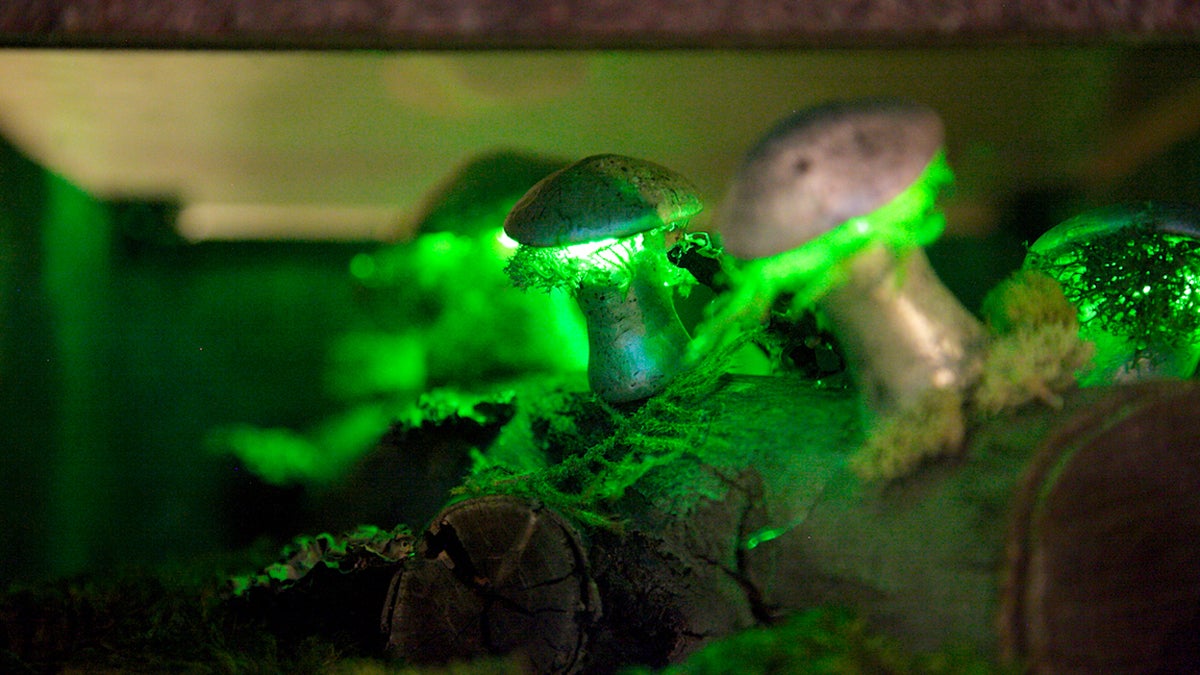Exhibit on light-emitting creatures offers illuminating experience in Philly

More than 40 species of glowing fungi have been identified. Some have been called "fairy fire" due to its magical look.
Opening Saturday at the Academy of Natural Sciences of Drexel University, “Glow: Living Lights” will feature the likes of scorpions and plankton to illustrate the biological phenomenon of organisms able to produce their own light.
The show will incorporate video, preserved specimens, interactive elements, and even dress up in this family-friendly venue, said Jennifer Sontchi, director of exhibits.
“It’s a fun exhibit,” Sontchi said. “It’s kind of spooky and amazing at the same time.”
Visitors will make their way through the dark exhibit room and learn about the different types of light that animals may emit — fluorescence and bioluminescence, for example.
“Bioluminescence is animals that create their own light — the light is produced by the animal — and fluorescence is light that reflects back off of the animal from another light source,” Sontchi said.
Though the exhibit does have fluorescent scorpions, most of the focus is on the bioluminescent creatures that produce a cool, efficient type of light by converting chemical energy to light energy. These organisms are found most frequently in marine environments, although land-based examples include fireflies and mushrooms.
The exhibit, most of which was rented from Exhibit IQ, showcases a living, common type of bioluminescent organism in an interactive manner.
“There are marine protists, a kind of plankton, called dinoflagellates and they’re alive and they’re microscopic,” Sontchi said.
“You peer through the exhibit and you push the button and the water stirs up and then you can’t believe this green, sparkling, beautiful animal just bursts out at you,” she said.
Beyond the cool factor, bioluminescence can be an evolutionary advantage, allowing prey to distract or flummox their predators. The brittle star, a marine organism, actually detaches one of its glowing arms as a diversion for a predator while the star escapes.
“What a wonderful strategy that is!” Sontchi said.
Bioluminescence has also been incorporated into scientific studies, allowing researchers to tag cells to emit light. This can be helpful for scientists seeking to track the progression of cancer, for example.
The exhibit also features a giant jar in which children can stand dressed as fireflies for a photo op. They can also pose with a representation of the bioluminescent angler fish.
“Glow: Living Lights” will run through the end of September.
WHYY is your source for fact-based, in-depth journalism and information. As a nonprofit organization, we rely on financial support from readers like you. Please give today.

